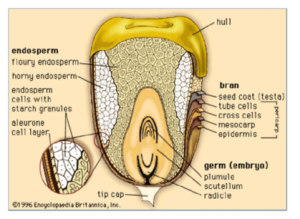
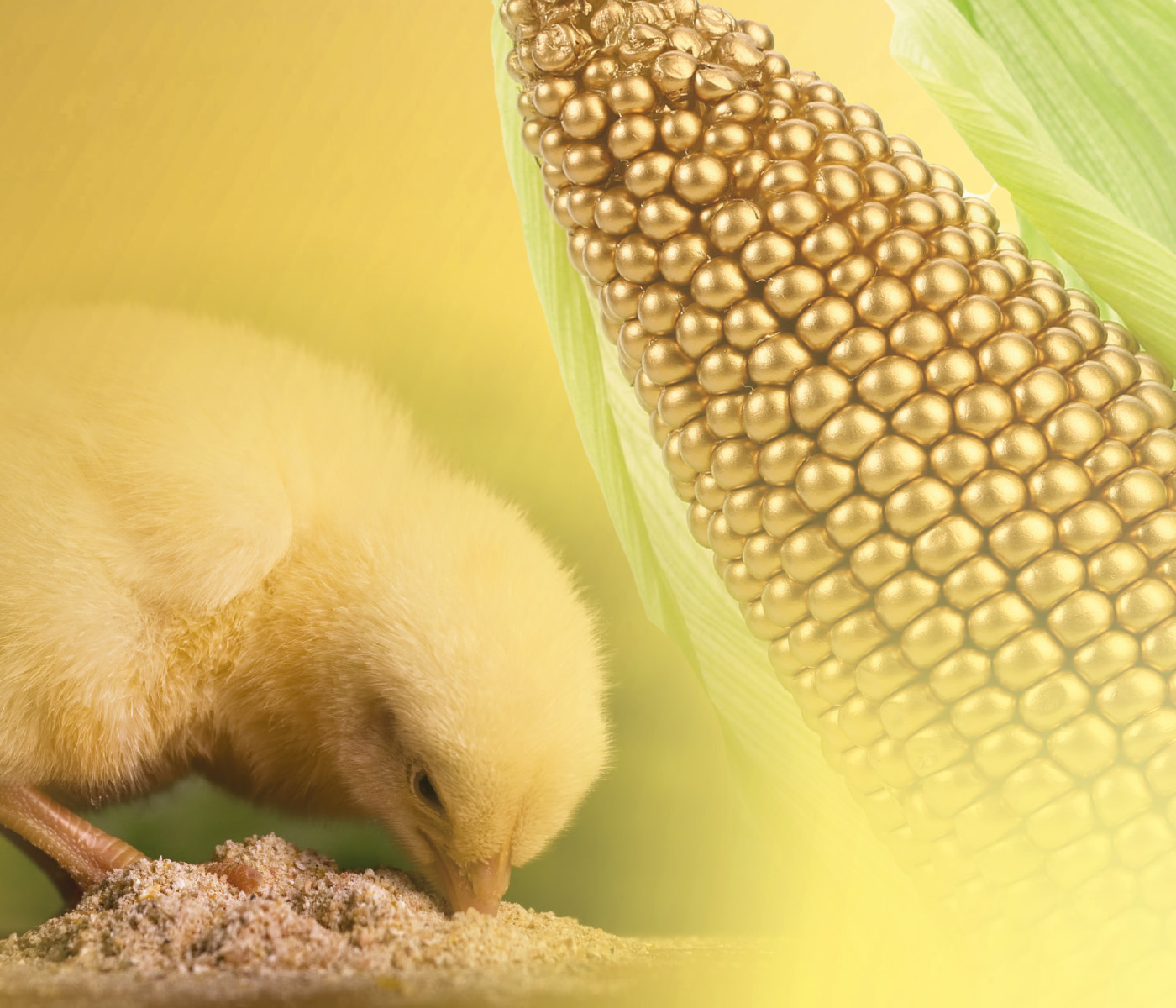 15 Aug 2023
15 Aug 2023
Nutritional Importance of Corn Quality in Broiler Diets
Approximately 70% of the world’s produced corn is destined for animal feed (EMBRAPA, 2006). It serves as the most important energy component in the diet of broiler chickens, constituting one of the most prominently included ingredients in diets, contributing around 65% of metabolizable energy and 20% of crude protein (Cowieson, 2004).
In terms of its morphology, the corn kernel can be divided into::
The vitreous and starchy endosperm section encompasses the starch component and certain storage proteins, accounting for roughly 80% of the grain’s composition.

Figure 1. Layers and internal structure of the maize kernel (Merriam-Webster Inc. 2006).
 The vitreous endosperm exhibits a protein matrix that is dense and tightly packed, posing challenges to its breakdown (Wang and Eckohoff, 2000). In this specific endosperm type, starch granules demonstrate a higher level of organization (Figure 2a)
The vitreous endosperm exhibits a protein matrix that is dense and tightly packed, posing challenges to its breakdown (Wang and Eckohoff, 2000). In this specific endosperm type, starch granules demonstrate a higher level of organization (Figure 2a)
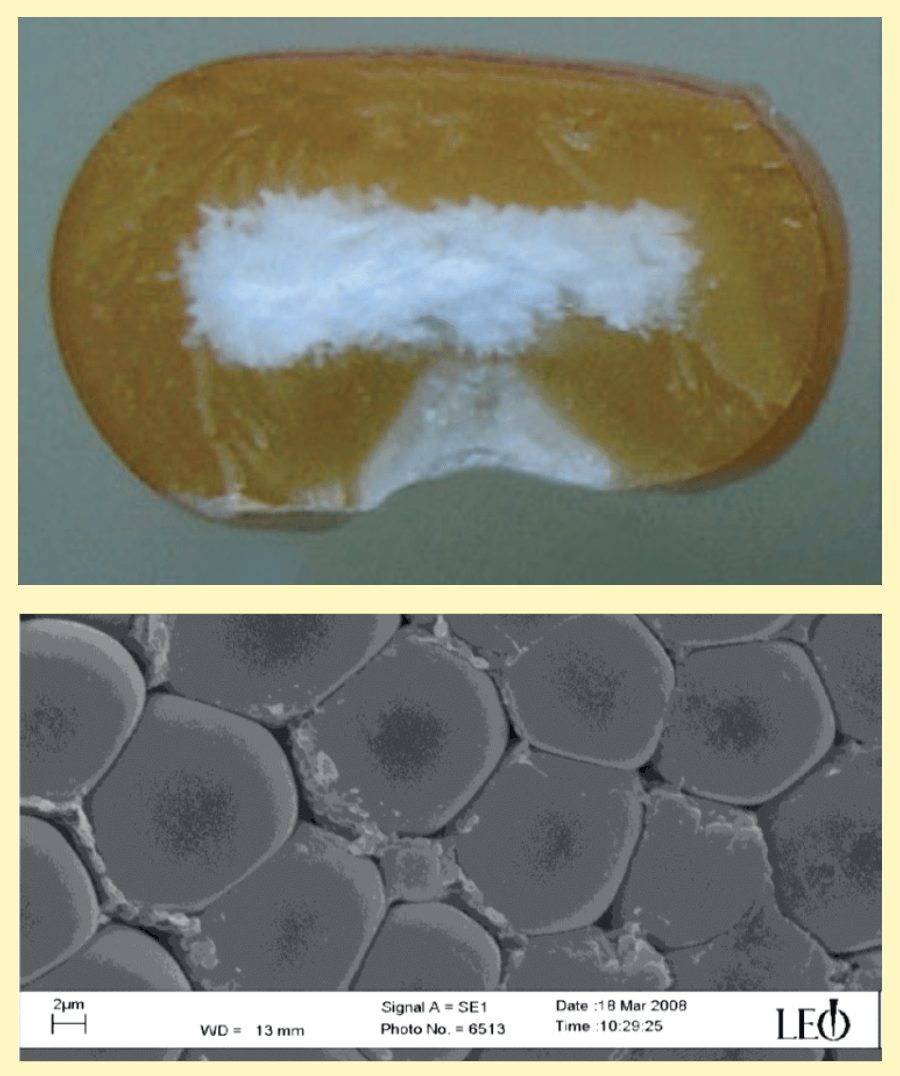
Figure 2a. Vitreous endosperm. Sources: Holding, D. R., 2014; Sementes biomatrix
 Conversely, the starchy endosperm features a matrix that is less dense and less substantial. Within this endosperm type, starch granules are arranged in a more relaxed manner, potentially enabling easier enzyme access (Huntington, 1997) (Figure 2b).
Conversely, the starchy endosperm features a matrix that is less dense and less substantial. Within this endosperm type, starch granules are arranged in a more relaxed manner, potentially enabling easier enzyme access (Huntington, 1997) (Figure 2b).
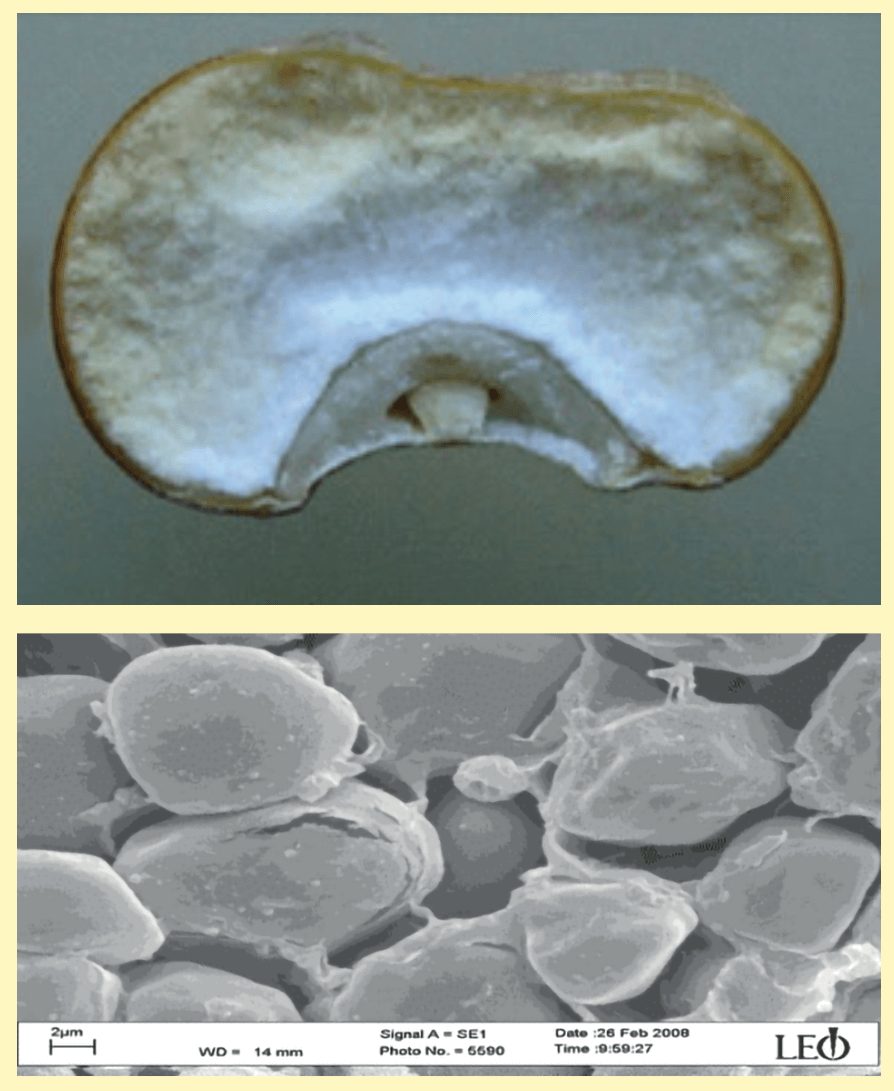
Figure 2b. Starchy endosperm. Sources: Holding, D. R., 2014; Sementes biomatrix
Both starch and protein digestibility can be compromised due to difficulties in accessing starch granules. The structural difference between starchy and vitreous endosperm, mainly characterized by the protein matrix profile, can impact the grain’s nutritional value (Tamagno et al., 2016), with protein content being higher in the vitreous endosperm (Gayral et al., 2015).
 Processing stages such as grain drying can have an impact on protein solubility (Peplinski et al., 1994). Furthermore, during the process of feed pelleting, where starch gelatinization is a key goal, there’s a possibility of undesirable reactions like retrograded starch and Maillard reactions taking place.
Processing stages such as grain drying can have an impact on protein solubility (Peplinski et al., 1994). Furthermore, during the process of feed pelleting, where starch gelatinization is a key goal, there’s a possibility of undesirable reactions like retrograded starch and Maillard reactions taking place.
Starch
Starch is a polysaccharide composed of glucose units, organized within the granule as structures called amylose and amylopectin (Weurding et al., 2003; Isaksen et al., 2011). In the case of corn, amylose makes up around 25% of the starch content, featuring a linear chain of glucose units interconnected by alpha-1-4 bonds.
Due to structural and bonding characteristics, enzymes can access amylopectin more easily compared to amylose, making it more digestible (Svihus et al., 2005).
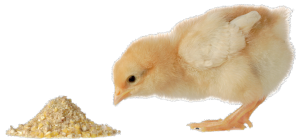 Starch is classified based on its susceptibility to enzymatic hydrolysis into rapidly digestible starch (RDS), slowly digestible starch (SDS), and resistant starch (RS).
Starch is classified based on its susceptibility to enzymatic hydrolysis into rapidly digestible starch (RDS), slowly digestible starch (SDS), and resistant starch (RS).
 RDS is readily available for absorption and is hydrolyzed after 20 minutes, SDS is the fraction hydrolyzed enzymatically within 20 to 120 minutes after ingestion, and RS resists enzymatic digestion in the small intestine, being fermented by bacteria in the latter parts of the intestine (Englyst & Hudson, 1996; Yue and Waring, 1998).
RDS is readily available for absorption and is hydrolyzed after 20 minutes, SDS is the fraction hydrolyzed enzymatically within 20 to 120 minutes after ingestion, and RS resists enzymatic digestion in the small intestine, being fermented by bacteria in the latter parts of the intestine (Englyst & Hudson, 1996; Yue and Waring, 1998).
RS, in turn, can be divided into other categories.
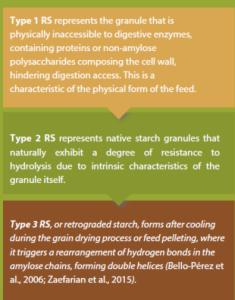
Starch Digestibility
The level of starch digestibility is a subject of debate; certain researchers reported values approximately at 85% (Garcia et al., 2003), whereas others attain values of 95% (Soto-Salanova et al., 1996). This divergence can be attributed to factors such as cultivar diversity, plant growth conditions, and spatial organization of starch polymers (Penz Jr., 1998). Nevertheless, this difference in values may be linked to the methodology employed.
Corn grain digestibility can be affected by the amylose:amylopectin ratio due to processing type, starch gelatinization, and retrogradation (Bjorck et al., 1994).
| According to Carré (2004), corn has a low concentration of antinutritional factors like phytate and non-starch polysaccharides (NSPs), and its digestibility can be influenced by particle size after grinding and granule structural variation. Hauschild et al. (2006) show that nutrient digestibility and absorption can be altered by mycotoxins, negatively affecting animal performance. |
Research indicates that animals with rapid growth rates exhibit lower efficiency in starch digestion due to the birds’ voracity. This eagerness affects the digestion and absorption of nutrients by influencingthe gastrointestinal tract passage rate (Duke, 1986; Rougière et al., 2009).
 Svihus’ studies(2011), suggest that there is an inverse relationship between feed intake and digestibility. Consequently, when feed intake is elevated, starch digestibility tends to decrease. This phenomenon arises from physiological factors involving the interplay between the quantity of ingested substrate by the animal and the inadequacy of endogenous enzymes for hydrolysis.
Svihus’ studies(2011), suggest that there is an inverse relationship between feed intake and digestibility. Consequently, when feed intake is elevated, starch digestibility tends to decrease. This phenomenon arises from physiological factors involving the interplay between the quantity of ingested substrate by the animal and the inadequacy of endogenous enzymes for hydrolysis.
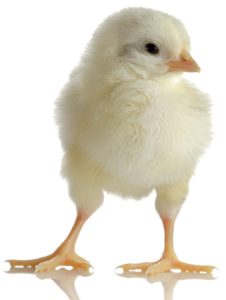 Another limiting factor for starch digestion in animals is the amount of endogenous enzymes which are necessary for effective starch utilization. If this process is not efficient, the bird is unable to fully harness its potential for energy utilization through starch hydrolysis (Sklan et al., 2003).
Another limiting factor for starch digestion in animals is the amount of endogenous enzymes which are necessary for effective starch utilization. If this process is not efficient, the bird is unable to fully harness its potential for energy utilization through starch hydrolysis (Sklan et al., 2003).
 During the later phases, there’s an approximate 95% increase in pancreatic amylase, accompanied by a 200% rise in starch intake (Noy and Skan, 1995). However, this situation could result in a shortfall in the later stages where there’s a surplus of substrate but a scarcity of endogenous enzymes. Sakomoto (2009) indicated that the secretion of pancreatic amylase might encounter constraints both at the initial and final stages, potentially leading to a deficiency in starch digestibility.
During the later phases, there’s an approximate 95% increase in pancreatic amylase, accompanied by a 200% rise in starch intake (Noy and Skan, 1995). However, this situation could result in a shortfall in the later stages where there’s a surplus of substrate but a scarcity of endogenous enzymes. Sakomoto (2009) indicated that the secretion of pancreatic amylase might encounter constraints both at the initial and final stages, potentially leading to a deficiency in starch digestibility.
Therefore, the elements that impact starch utilization encompass amylase secretion and the volume of ingested feed.
Corn Quality
The quality of corn is crucial in formulating diets for broiler chickens, as not only is it regarded as the primary energy component in feeds, but its poor quality can also compromise animal performance.
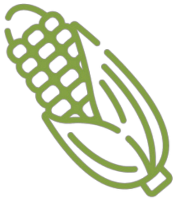 Findings presented by Leeson et al. (1993) demonstrated variations in the energy content of different corn particles within the same harvest. Soto-Salanova et al. (1996) indicated that nutrient variations can occur among different batches of corn.
Findings presented by Leeson et al. (1993) demonstrated variations in the energy content of different corn particles within the same harvest. Soto-Salanova et al. (1996) indicated that nutrient variations can occur among different batches of corn.
According to the studies conducted by Rodrigues et al. (2003), the digestibility of nutrients and the energy values of diets varied based on the composition of corn used in the formulation of diets for broiler chickens.
Leal (2012) evaluated the chemical and physical characteristics of corn with varying levels of fungal contamination (fermented/moldy) and whole grains, along with the effects of using these grains in broiler chicken diets.
 Observations indicated an intensification of fungal infestation, a reduction in animal performance, and disruptions in the coefficients related to the metabolizability of dry matter and the apparent metabolizable energy within the diet.
Observations indicated an intensification of fungal infestation, a reduction in animal performance, and disruptions in the coefficients related to the metabolizability of dry matter and the apparent metabolizable energy within the diet.
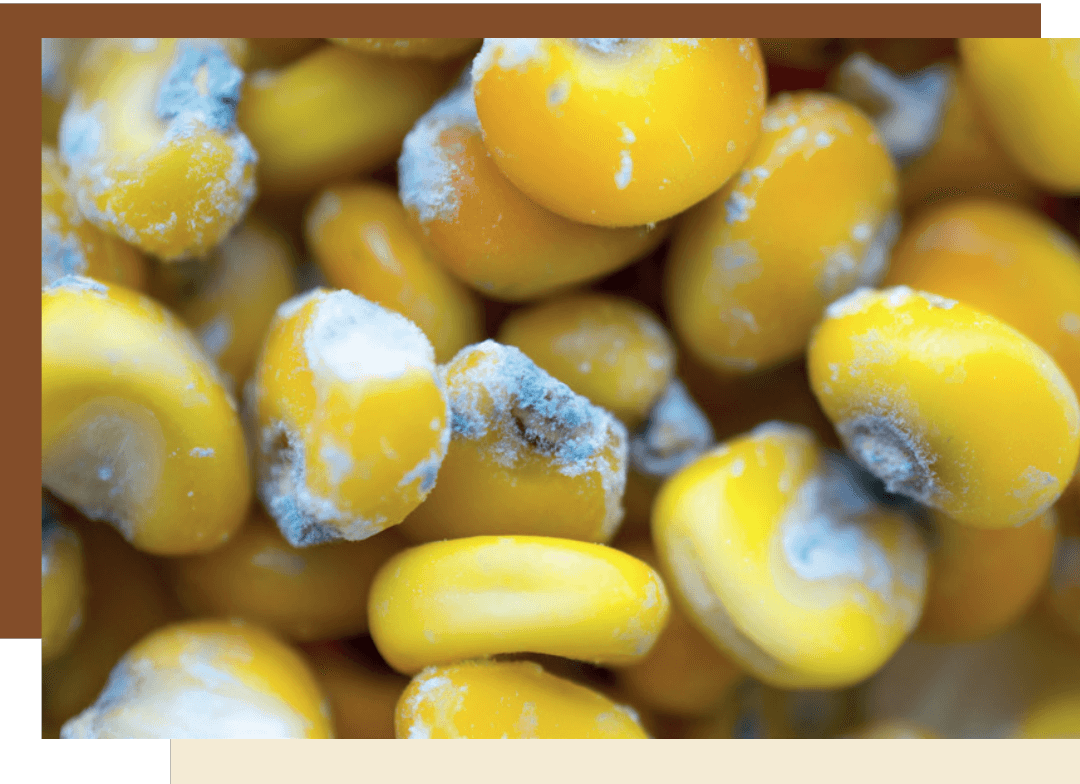
The physical characteristics of corn, alongside its moisture content, the presence of mycotoxins, the proportion of fractured, moldy, decayed, or contaminated grains, along with various other aspects, possess the potential to alter the nutritional constitution of corn. As a result, this can subsequently influence the quality of feeds supplied to broiler chickens, ultimately resulting in a decline in their performance (Silva, et al., 2008).
| The utilization of poor-quality corn can impact the final phase of the birds’ production cycle, resulting in economic losses. In their observations, Stringhini et al. (2000) noted that corn harboring various insect or fungal infestations brought about an elevated occurrence of metabolic challenges in the avian population. This, in turn, led to an increased rate of carcass rejection at the processing facility. |
Bibliographical references available upon request.
This article was originally published as content in portuguese on nutriNews Brasil 2023
You may also like to read: “UNDERSTANDING CORN VARIABILITY: PART I”
Subscribe now to the technical magazine of animal nutrition
AUTHORS

Nutritional Interventions to Improve Fertility in Male Broiler Breeders
Edgar Oviedo
The Use of Organic Acids in Poultry: A Natural Path to Health and Productivity
M. Naeem
Synergistic Benefits of Prebiotics and Probiotics in Poultry, Swine, and Cattle
Gustavo Adolfo Quintana-Ospina
Hybrid Rye Potential in Laying Hen Feed Rations
Gwendolyn Jones
A day in the life of phosphorus in pigs: Part I
Rafael Duran Giménez-Rico
Use of enzymes in diets for ruminants
Braulio de la Calle Campos
Minerals and Hoof Health in the Pregnant Sow
Juan Gabriel Espino
Impact of Oxidized Fats on Swine Reproduction and Offspring
Maria Alejandra Perez Alvarado